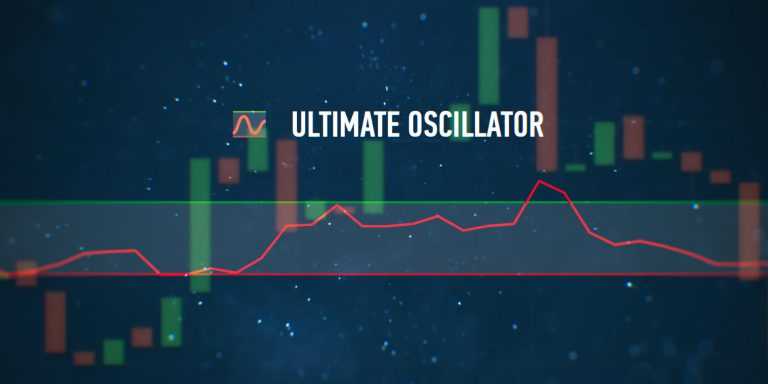Ultimate Oscillator (UO) is a momentum indicator that combines short-, medium- and long-term price action into one analysis tool. There is Awesome Oscillator, Pretty Good Oscillator and then there is Ultimate Oscillator. What’s the difference between the three and why to use this particular indicator? Read the full article to learn more.
How does it work?
As most oscillators, the indicator is a combination of three lines — the indicator line and two horizontal levels: 30 for oversold and 70 for overbought. Unlike most other momentum oscillators, Ultimate Oscillator is using not one but three distinct timeframes to make its readings more accurate and prevent the formation of false divergences. Each time frame is assigned with a weight of its own, with the shortest receiving the most weight. Longer timeframes, although not as important in terms of calculation, are nonetheless factored in. The ultimate goal of this setup is to eliminate false divergences (which are quite common among momentum oscillators). It can be said that UO is an upgraded, yet lesser-known version of Awesome Oscillator.
How to use in trading?
This oscillator can be used as a measure of buying/selling pressure. The general rule tells the following: when the buying pressure is strong, the indicators goes up. When the buying pressure weakens, the indicators will go down.
A divergence is the difference in the direction of the general trend and the indicator itself. When the prices make new lows and the indicator doesn’t, a bullish divergence is observed. When the prices make a higher high and the indicator fails to do so, a bearish divergence is observed.
According to Larry Williams, the man behind the indicator, there are certain criteria for entries/exits:
A buy signal is received when 1) a bullish divergence is formed, 2) the oscillator has fallen below the 30 threshold and 3) the oscillator then breaks above the highest point observed during the divergence.

A selling signal is received when 1) a bearish divergence is present, 2) the high of the divergence is above the 70 line and 3) the oscillator then falls below the lowest point observed during the divergence.

As always, you should consider using Ultimate Oscillator in conjunction with other indicators and remember that no indicator is capable of providing accurate signals 100% of the time. All indicators can and will provide false signals from time to time.
How to set up?
When working with IQ Option, setting up the Ultimate Oscillator indicator is easy. Here’s what you need to do:
- Click on the ‘Indicators’ button in the left-hand bottom corner of the screen and go to the ‘Momentum’ tab,
2. Choose ‘Ultimate Oscillator’ from the list of available indicators,
3. Without changing the default settings hit the ‘Apply’ button. Experienced traders can adjust Period 1, 2 and 3 to their liking as long as they understand the principles behind the indicator and the way it is calculated.
The indicator is ready to use!
Now, when you know how to set up and use Ultimate Oscillator in trading, you can try it and see if this indicator can become a part of your trading strategy.


